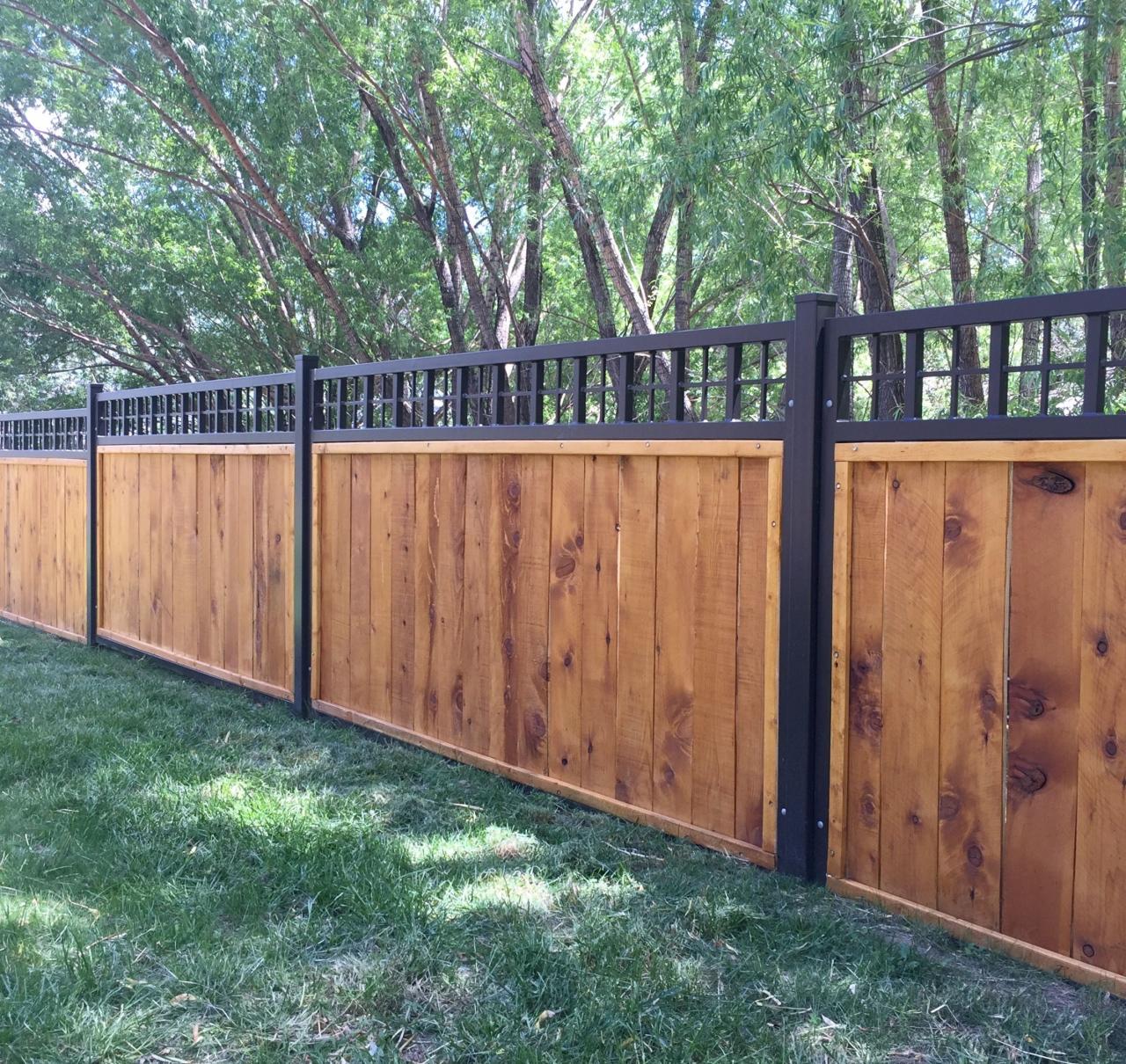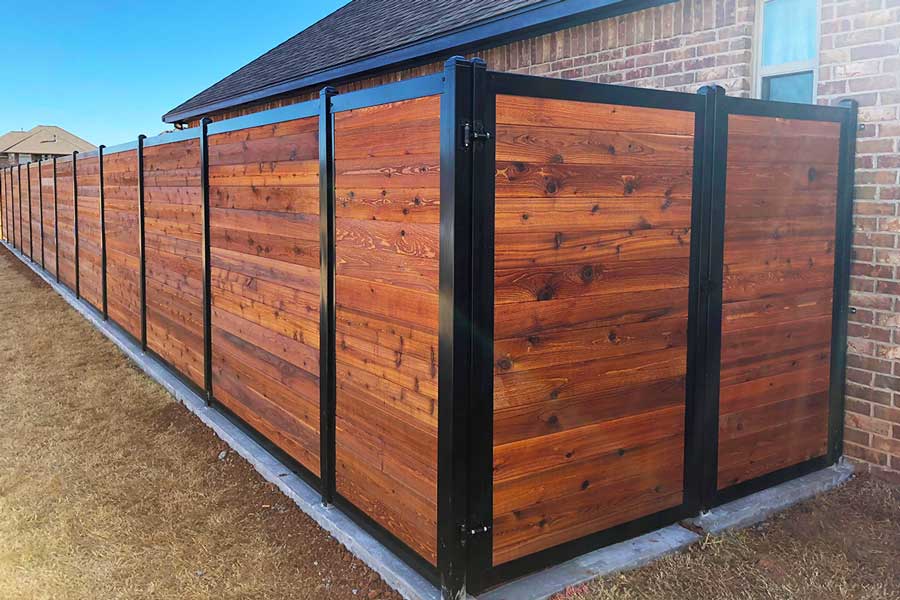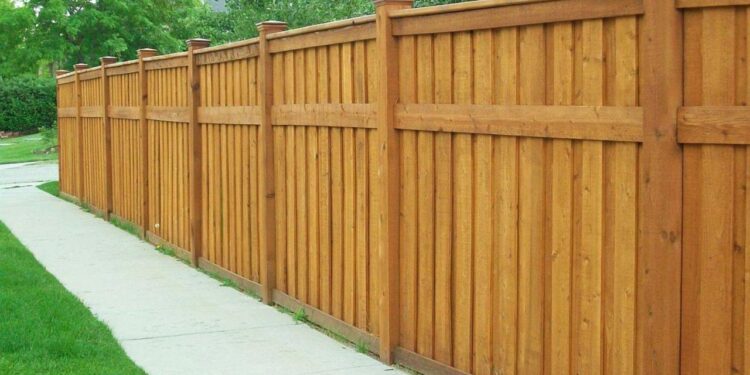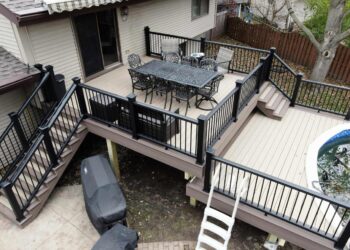Exploring the realm of privacy fences opens up a world of choices and possibilities. From the types of fences available to the materials used and design considerations, this guide dives deep into the best options for ensuring privacy and security in your outdoor space.
Let's unravel the intricacies of privacy fence options together.
Types of Privacy Fences
When it comes to choosing a privacy fence for your property, there are several options available in the market. Each type of privacy fence has its own set of pros and cons, making it important to consider your specific needs before making a decision.
Below, we will discuss some of the most common types of privacy fences, along with their advantages and disadvantages.
Wooden Fences
Wooden fences are a popular choice for privacy due to their natural look and versatility. They can be customized to fit the style of your home and come in various heights for added privacy. However, wooden fences require regular maintenance such as staining or painting to prevent rotting and warping.
Vinyl Fences
Vinyl fences are low-maintenance and durable, making them a convenient option for homeowners who want privacy without the hassle of upkeep. They are resistant to rot, decay, and pests, but they may not offer the same aesthetic appeal as wooden fences.
Chain Link Fences with Privacy Slats
Chain link fences with privacy slats are a cost-effective way to add privacy to your property. The slats can be inserted into the chain link mesh to block the view from outside. While these fences are durable and require minimal maintenance, they may not provide as much privacy as solid fences.
Composite Fences
Composite fences are made from a combination of wood fibers and plastic, offering the look of wood with the durability of plastic. They are resistant to rot, decay, and pests, making them a long-lasting option for privacy. However, composite fences can be more expensive upfront compared to other materials.
Metal Fences
Metal fences, such as aluminum or steel, are known for their strength and durability. They can be designed with decorative elements for added curb appeal while still providing privacy. However, metal fences may not offer as much privacy as solid options and can be prone to rust if not properly maintained.
Materials for Privacy Fences

When it comes to privacy fences, the choice of material plays a crucial role in determining the fence's durability, maintenance requirements, and overall aesthetic appeal. Different materials offer unique features and benefits that cater to varying preferences and needs.
Wood
Wood is a classic and popular choice for privacy fences due to its natural look and versatility. However, it requires regular maintenance such as staining or painting to protect it from the elements. Cedar and redwood are commonly used for their durability and resistance to rot and insects.
Vinyl
Vinyl fences are low maintenance and durable, making them a convenient option for those looking for a hassle-free solution. They are available in various styles and colors, mimicking the look of wood without the need for regular upkeep. Vinyl fences are also resistant to rot, fading, and discoloration.
Metal
Metal fences, such as aluminum or wrought iron, offer a modern and sleek aesthetic to any property. While they are durable and require minimal maintenance, they may not provide as much privacy as wood or vinyl fences. Metal fences are often used for decorative purposes or in combination with other materials for added security.
Composite
Composite fences are a blend of wood fibers and recycled plastic, offering the natural look of wood with the durability of plastic. They are resistant to rot, insects, and fading, making them a long-lasting option for privacy fences. Composite fences require minimal maintenance and are available in various colors and textures.
Bamboo
Bamboo fences are an eco-friendly option that provides a natural and exotic look to any outdoor space. They are lightweight, durable, and resistant to rot, making them a sustainable choice for privacy fences. Bamboo fences can be easily installed and offer a unique aesthetic appeal to any property.
Design Considerations

When selecting a privacy fence for your property, there are several essential design factors to consider to ensure it enhances the overall aesthetics and functionality of your space.Fence height, style, and color play a significant role in the overall appearance of a privacy fence.
The height of the fence can impact the level of privacy and security it provides, as well as how it integrates with the surrounding landscape. Taller fences offer more privacy but can sometimes feel imposing, while shorter fences may provide a more open and welcoming feel.The style of the fence should complement the architectural style of your home.
For example, a sleek and modern home may benefit from a contemporary fence design with clean lines and minimal ornamentation, while a traditional home may pair well with a classic picket fence or a wrought iron design.Color is another important consideration when choosing a privacy fence.
The color of the fence should harmonize with the overall color scheme of your property. Neutral colors like white, gray, or natural wood tones are versatile options that can blend well with a variety of exterior palettes.
Tips for Selecting a Fence Design
When selecting a privacy fence design, consider the following tips to ensure it complements the architectural style of your home:
- Take cues from your home's architecture: Choose a fence design that echoes the style and details of your home, such as matching the fence material to existing exterior elements.
- Consider maintenance requirements: Factor in the upkeep needed for different fence materials, such as wood requiring periodic staining or painting.
- Think about the surrounding landscape: Ensure the fence design works harmoniously with your landscaping, such as incorporating planters or trellises for a more integrated look.
- Consult with a professional: If you're unsure about the best fence design for your property, seek advice from a professional landscaper or designer to help guide your decision.
Installation and Maintenance
Installing and maintaining a privacy fence is crucial to ensure its effectiveness and longevity. Whether you choose to do it yourself or hire a professional, proper installation and regular maintenance are key to keeping your privacy fence in top condition.
Installation Process
- Start by marking the fence line and digging post holes at regular intervals.
- Set the posts in concrete for stability and allow them to cure before attaching the fence panels.
- Secure the panels to the posts using appropriate hardware and make sure everything is level and aligned.
- Finish by adding post caps and any decorative elements to enhance the fence's appearance.
Maintenance Guide
- Regularly inspect the fence for any damage, such as rotting, warping, or discoloration.
- Pressure wash the fence annually to remove dirt, grime, and mildew buildup.
- Apply a fresh coat of sealant or stain every few years to protect the wood from the elements.
- Trim back any vegetation that may be encroaching on the fence to prevent damage.
End of Discussion

In conclusion, the journey through the world of privacy fence options has been enlightening and insightful. By understanding the types, materials, design factors, and installation methods, you are now equipped to make the best choice for your property. Enhance your outdoor space with the perfect privacy fence that not only serves its purpose but also adds aesthetic value to your home.








